Being gluten free, dairy free or even vegan doesn’t mean you have to live without delicious pie. With this amazing gluten free vegan pie crust recipe, you’ll happily say goodbye to pies of the past and start dreaming of all of your future pies. Plus, I am including step by step instructions so even beginning bakers can make pie crust.
I have made this crust hundreds of times and it comes out flaky every time. I mostly serve my food to gluten eaters and I get so many compliments on my crust whenever I serve pie. So don't worry about anyone knowing it's gluten free. You can serve this with your favorite filling or use or try one of my gluten free pie recipes.

Make sure to check out a few of my favorite pie recipes to fill your gluten free pie crust: german chocolate pecan pie, gluten free dutch apple pie and gluten free derby pie. For cookie crusts, check out my gluten free graham cracker crust and gluten free oreo pie crust which are perfect for cheesecakes and no bake pies.
Jump to:
- Want to save this recipe?
- Why You'll Love This Gluten-Free Pie Crust Recipe
- Equipment Needed
- Ingredient List
- Substitutions & Variations
- How to Make a Homemade Pie Crust
- Baking Tip
- How to Make Extra Flaky Gluten-Free Pie Crust
- How to make a lattice pie crust
- Use This Recipe to Make Decorative Pie Crusts
- Recipe FAQs
- Pie recipes to consider:
- Recipe
Want to save this recipe?
Enter your email below and we will send it straight to your inbox!
You will also be added to our weekly email list.
Why You'll Love This Gluten-Free Pie Crust Recipe
- It’s so flaky, it almost shatters in your mouth.
- It uses simple ingredients.
- It’s gluten free & vegan (and so delicious)
- It handles almost as easily as a traditional pie crust.
- It can be used for sweet pies or savory pies
Equipment Needed
For a basic pie crust, you will need:
- a pie plate or pie dish (either metal, glass or ceramic)
- a rolling pin
- plastic wrap or parchment paper
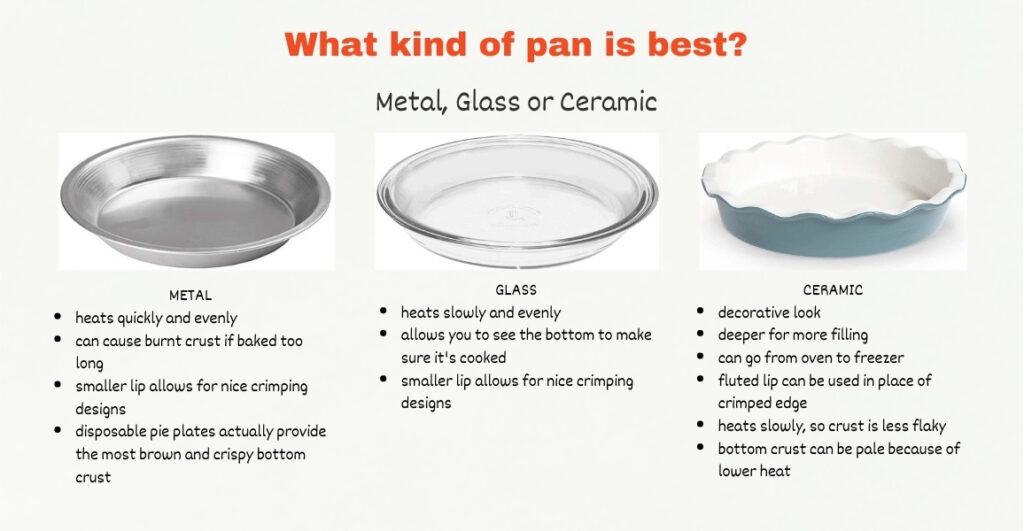
Additionally, for some recipes you may need pie weights for par-baking. A bench scraper and a food scale also come in handy, but are not required.
Ingredient List
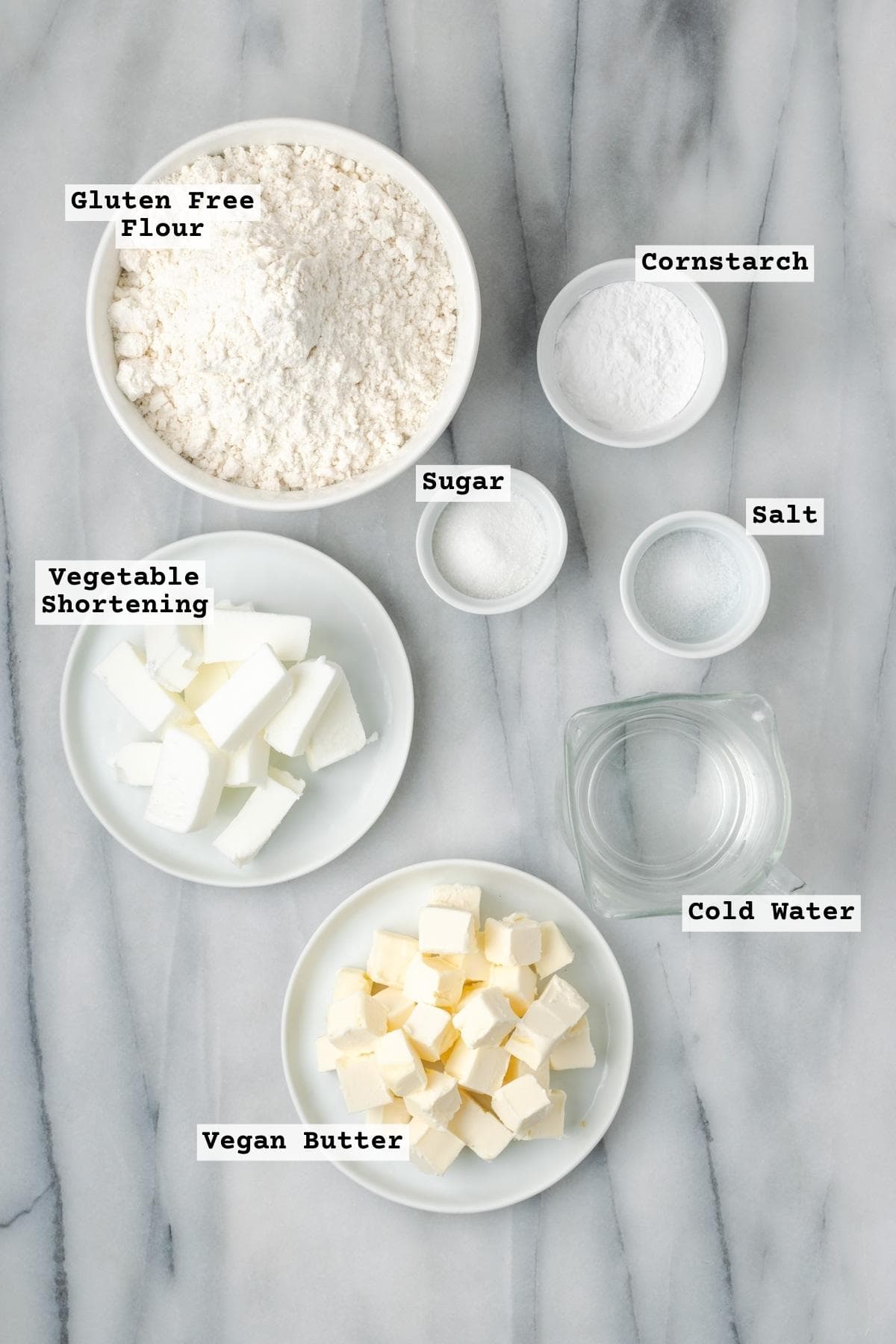
- Gluten Free Flour Blend – I use Bob’s Red Mill 1-to-1 Flour for my recipe. I have also tested it with King Arthur Measure for Measure flour with success. If you use another gluten-free flour blend make sure it contains xanthan gum or you will need to add it.
- Cornstarch – Adding a little starch helps lighten the texture of the crust to make it more like a pastry shell. You can substitute arrowroot powder or tapioca starch if you avoid corn.
- Salt – Just a little for flavor
- Sugar – A small amount of sugar helps the crust to brown and be crispy. It does not make the crust taste sweet, so do not omit.
- Vegan Butter – I use either Miyoko’s Plant Butter or Country Crock Plant Butter for my crust. Both work well. One thing to note when working with vegan butters is they melt quicker than dairy butter, so you must take care to keep the dough cold. Regular butter can also be used in this recipe if you’re not vegan or dairy free. Do not substitute margarine or other butter replacement products.
- Vegetable Shortening - For years I made my gluten free crust with all vegan butter and while it tastes delicious it can make it hard to work with the dough because it melts very quick. For the past year or so, I've been using half shortening and it gives the best of both worlds - extra flaky and buttery taste!
- Water – Ice water to keep the dough extra cold.
Substitutions & Variations
- Savory pie crust - add ¼ teaspoon black pepper, ⅛ teaspoon paprika, ⅛ teaspoon thyme per single pie crust recipe. It's great for pot pies and savory galettes!
- All butter crust - Replace the shortening portion with vegan butter, but be warned that the dough will be soft and prone to melting during assembly.
- Chocolate pie crust - Replace ⅓ cup of flour with cocoa powder for a chocolate crust that will take your pie to the next level.
How to Make a Homemade Pie Crust
Cut the vegan butter and shortening into cubes about ½″ wide and place into the freezer at least 15 minutes before you begin.
Measure your water and place it in the freezer while you measure and mix the remaining ingredients.
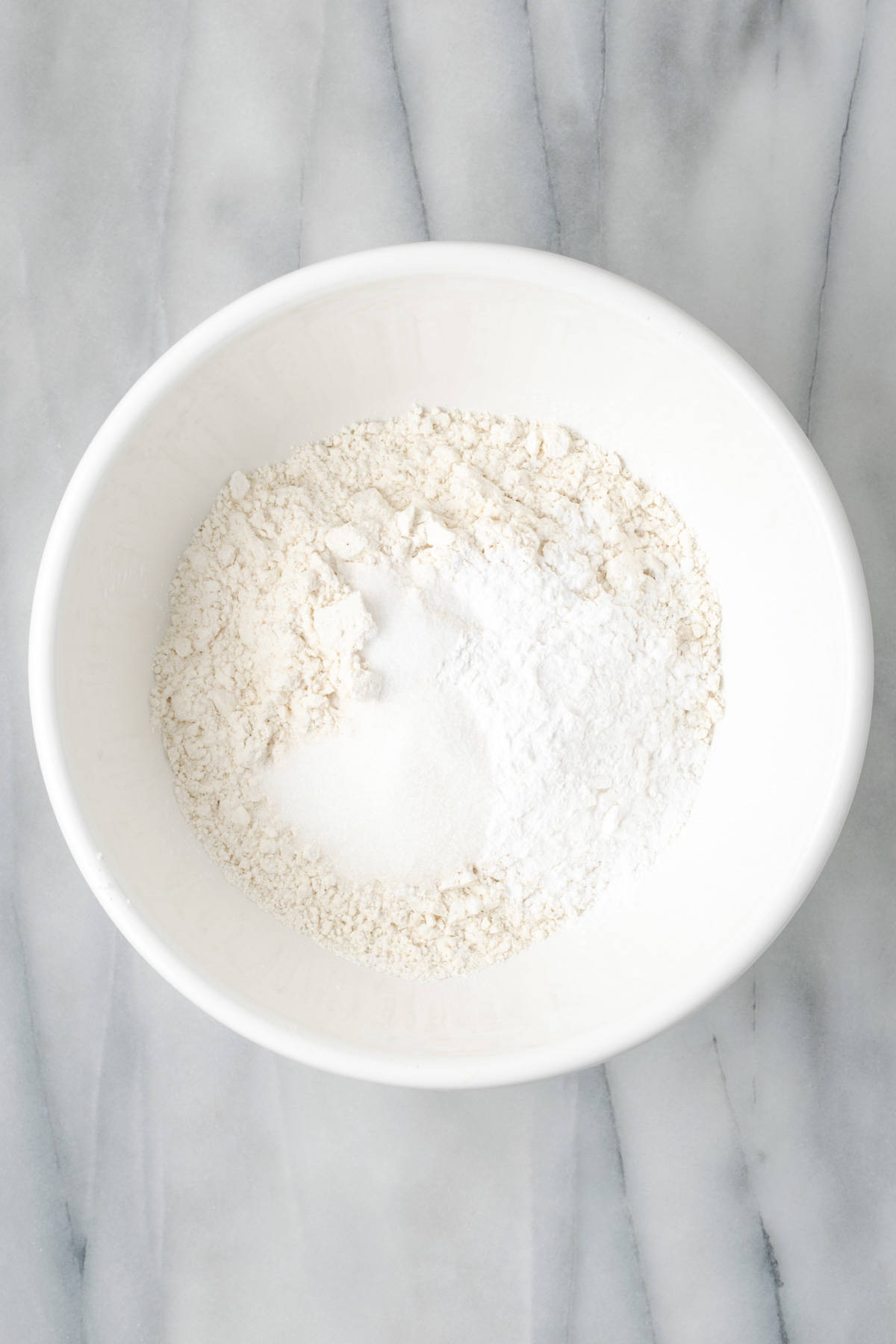
STEP 1: Combine the gluten free flour, starch, salt and sugar in a large mixing bowl. Stir well.
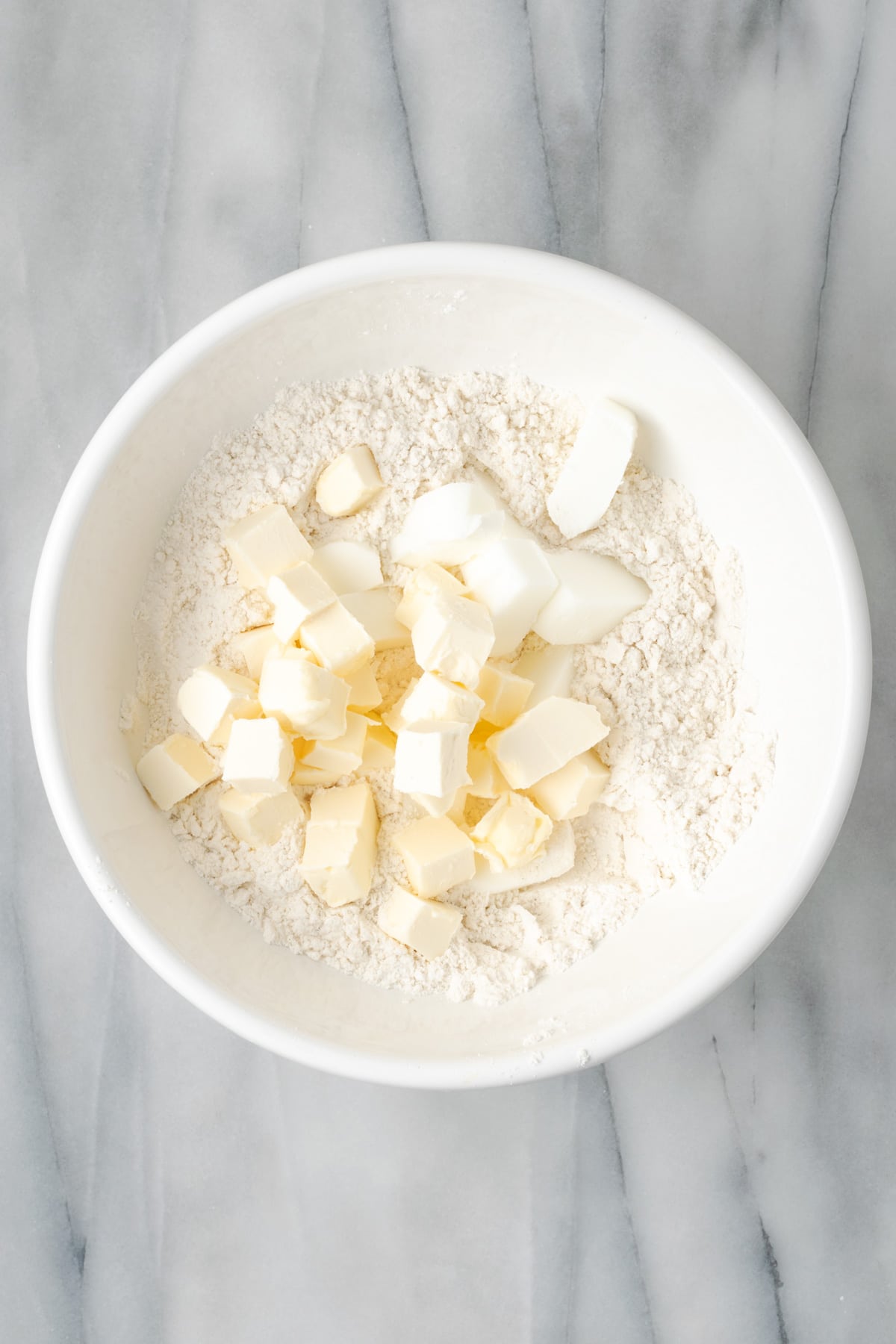
STEP 2: Add the cold butter and shortening cubes to the dry ingredients. Toss them together to coat the fat with flour.
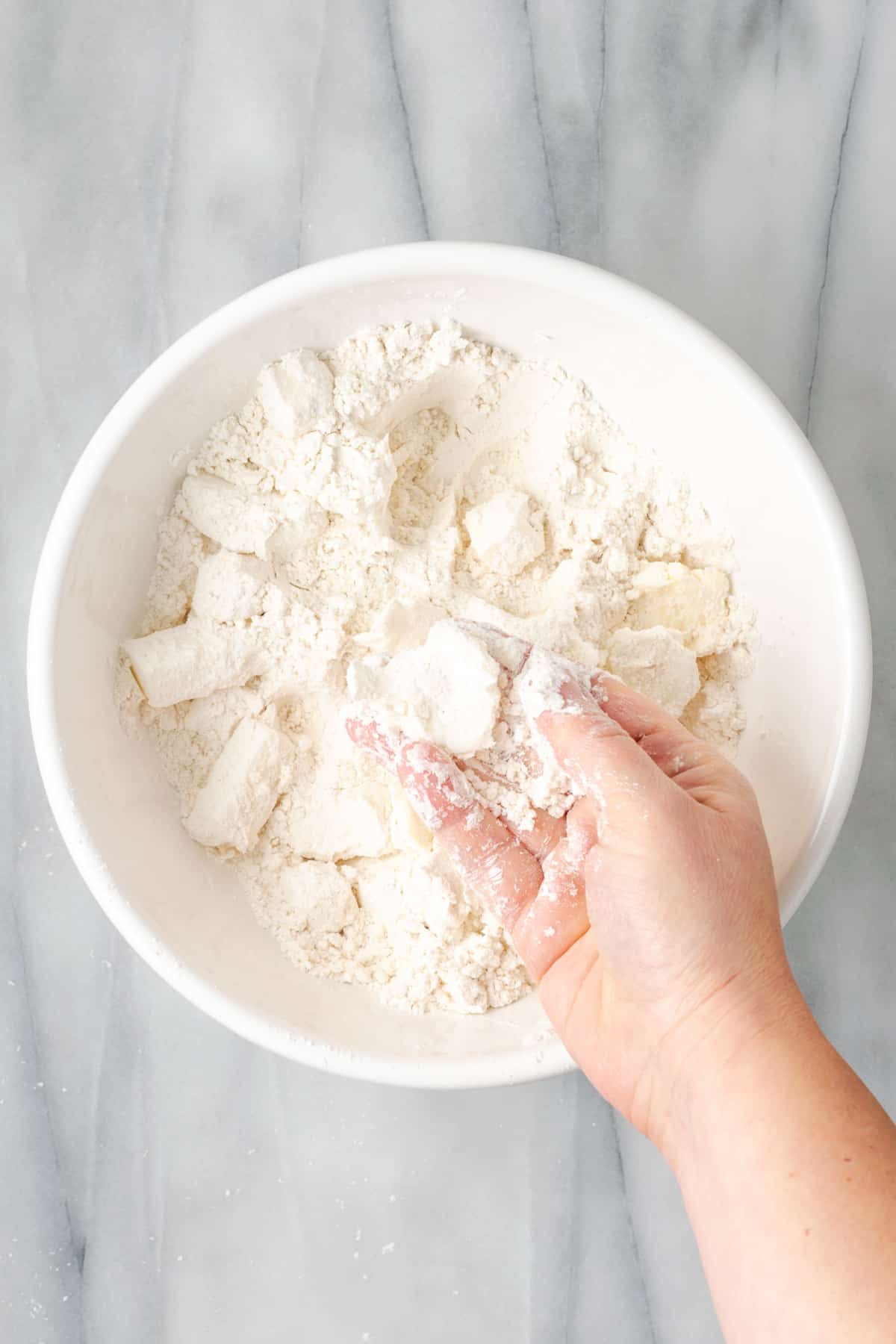
STEP 3: Once all of the fat is coated with flour, squish the pieces between your fingers to flatten them until they resemble quarters. Continue working your way through the bowl until everything has been reduced to large crumbles.
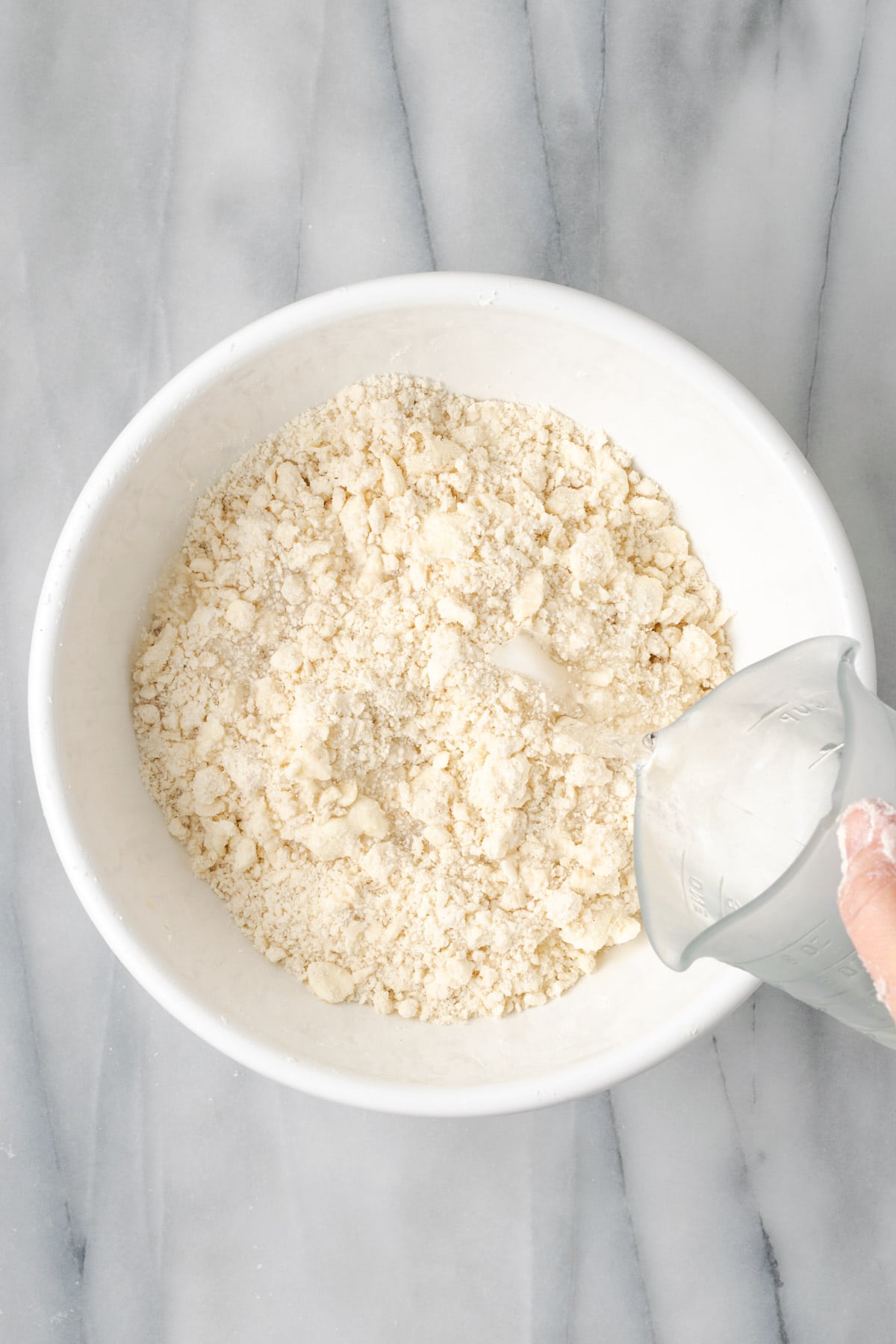
STEP 4: Once the fat has been worked with the dry ingredients, add about half of the water. Toss the mixture together (like you would toss a salad) to distribute the liquid. Continue to add the water by small amounts until the dough sticks together in your hands.
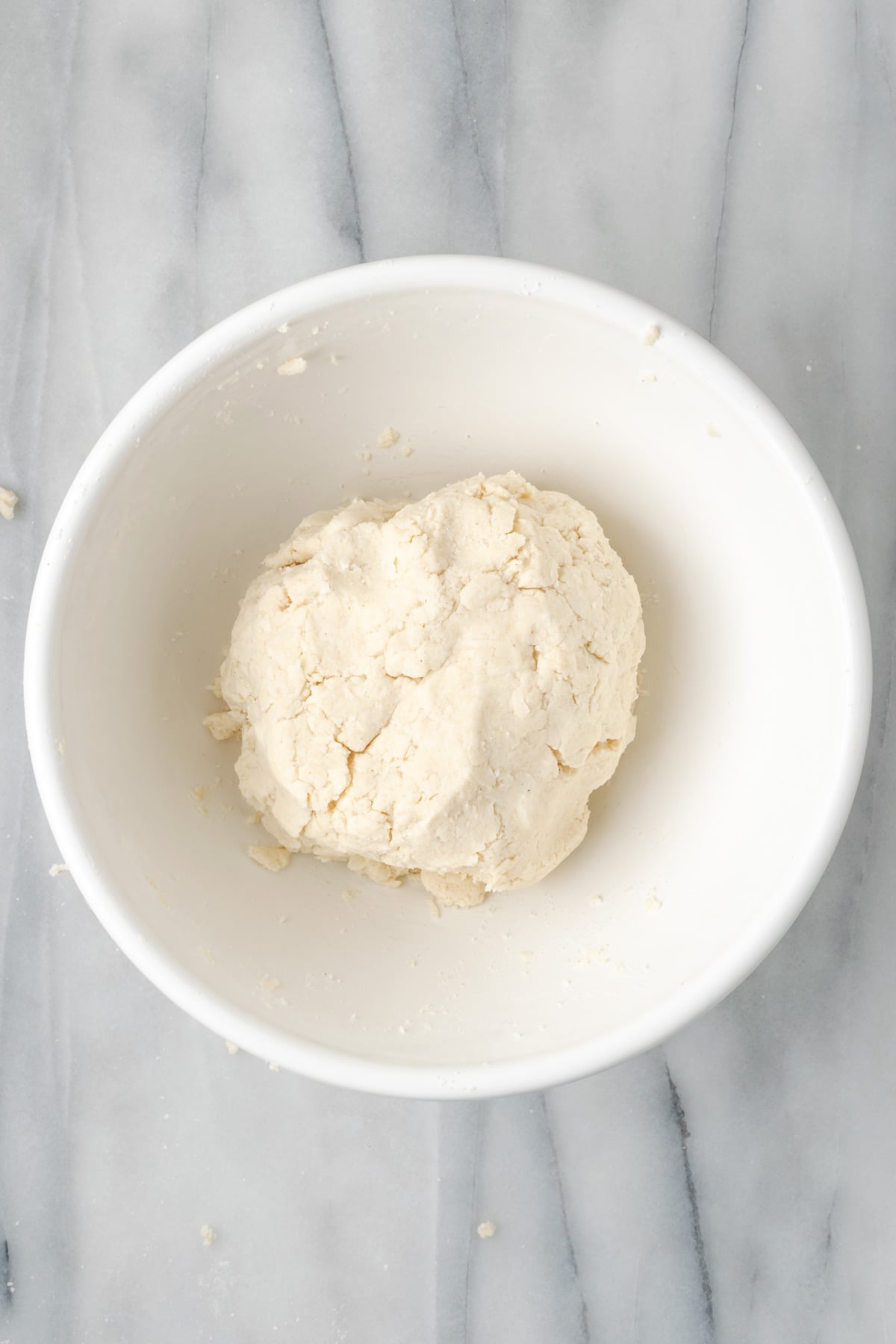
STEP 5: Form the dough into a large ball. It should not stick to the bowl at all. Since this recipe makes a double crust, cut your dough ball in half.

STEP 6: Wrap each half of the dough in plastic wrap. Flatten it into a disc about 1 inch thick, then refrigerate for 2 hours or up to 5 days.
You can also make this dough using a food processor. Simply combine all the dry ingredients in your food processor and add the cold butter and shortening . Pulse a few times until the butter is about the size of small peas. Dump the flour mixture into a bowl and add the water as listed above, mixing by hand. A food processor makes things much quicker but the end result will be a little less flaky because the butter pieces are smaller.
Here’s a video showing how I mix dough by hand
Remove your chilled dough from the refrigerator. There are two methods for rolling out the dough.
Method 1: Using plastic wrap to roll out dough sheets
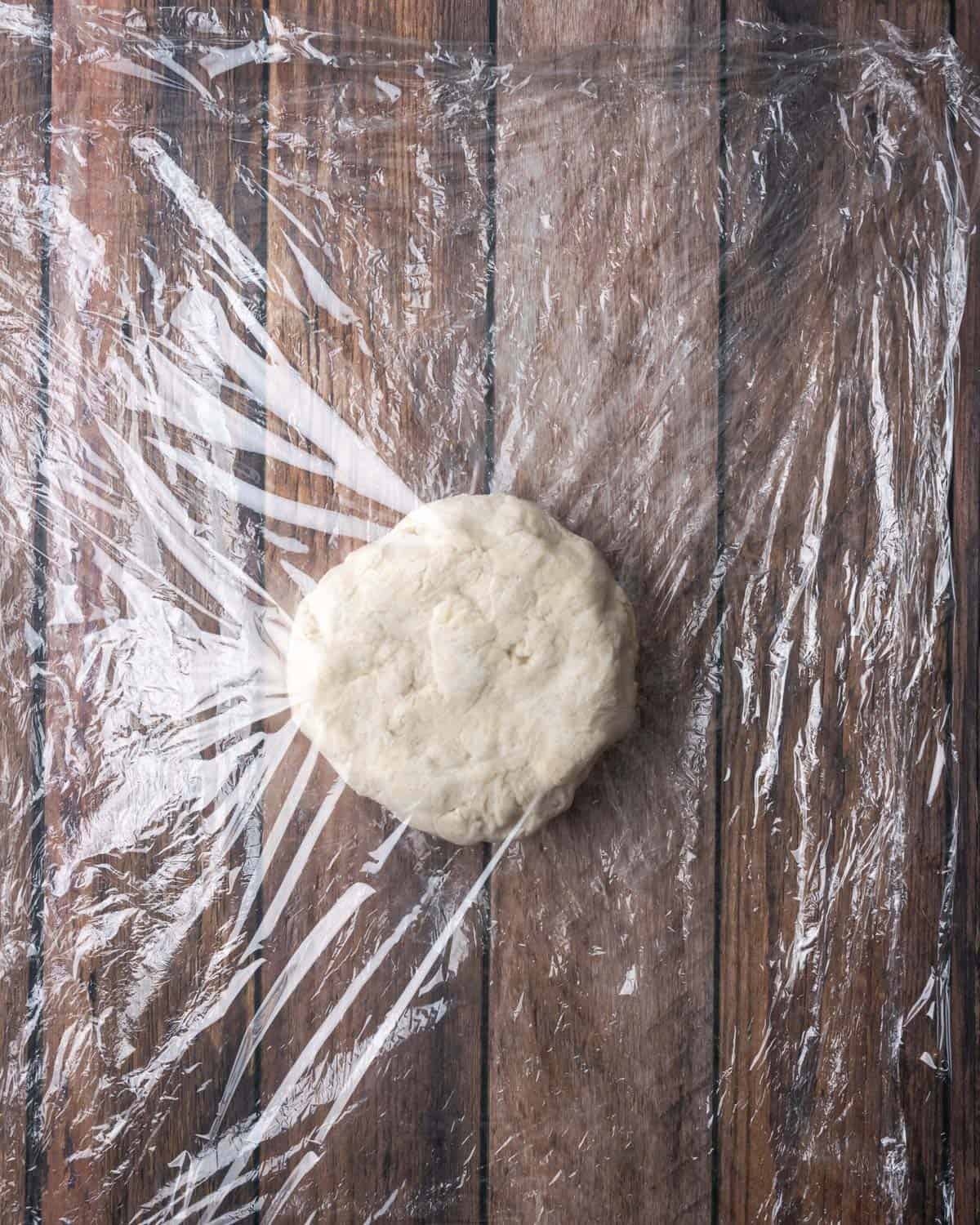
STEP 1: Place the chilled dough disc between two sheets of plastic wrap (like a sandwich).
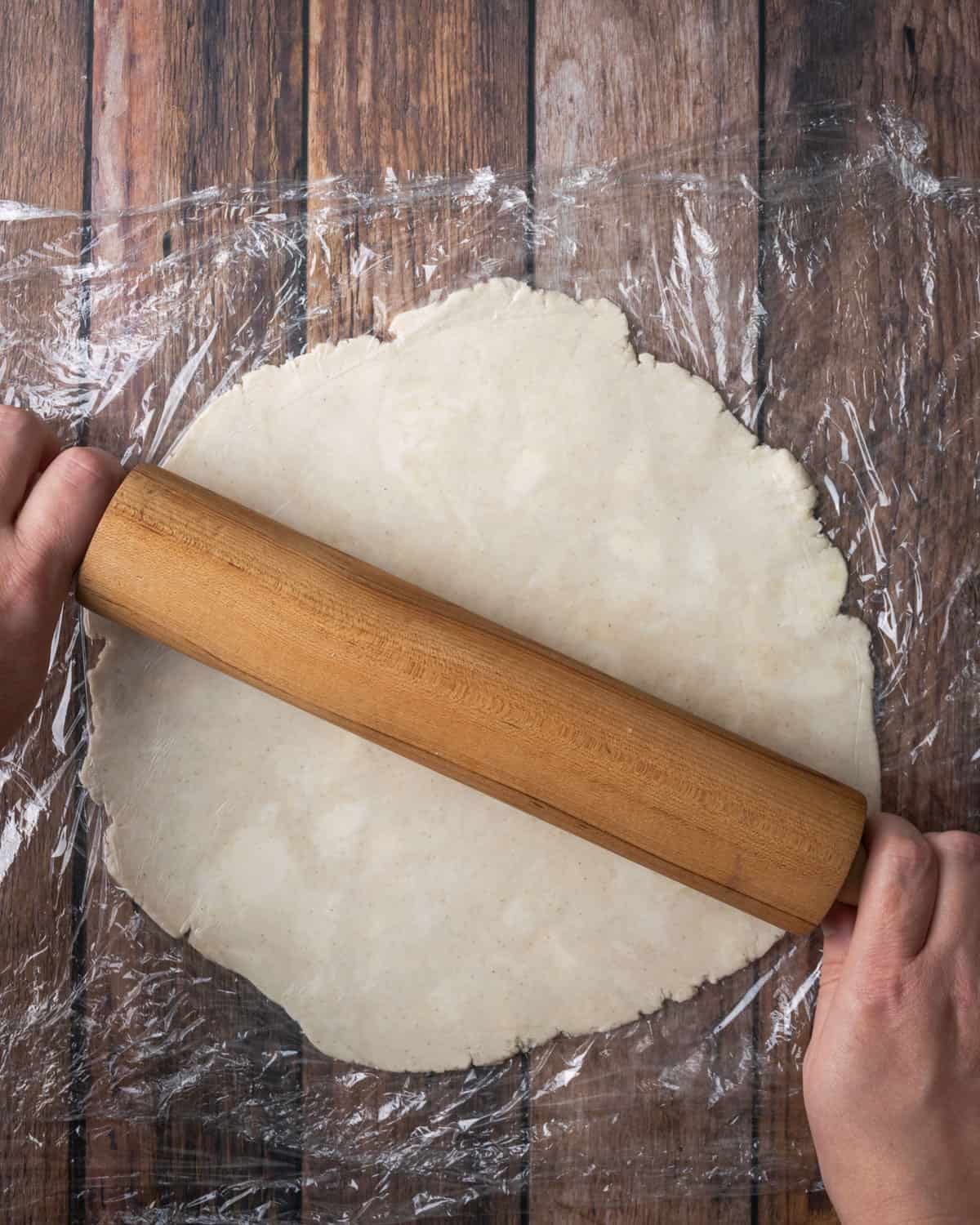
STEP 2: Roll out the dough with a rolling pin until it is 1" larger than the diameter of your pie pan.
Method 2: Using flour to roll out dough sheets
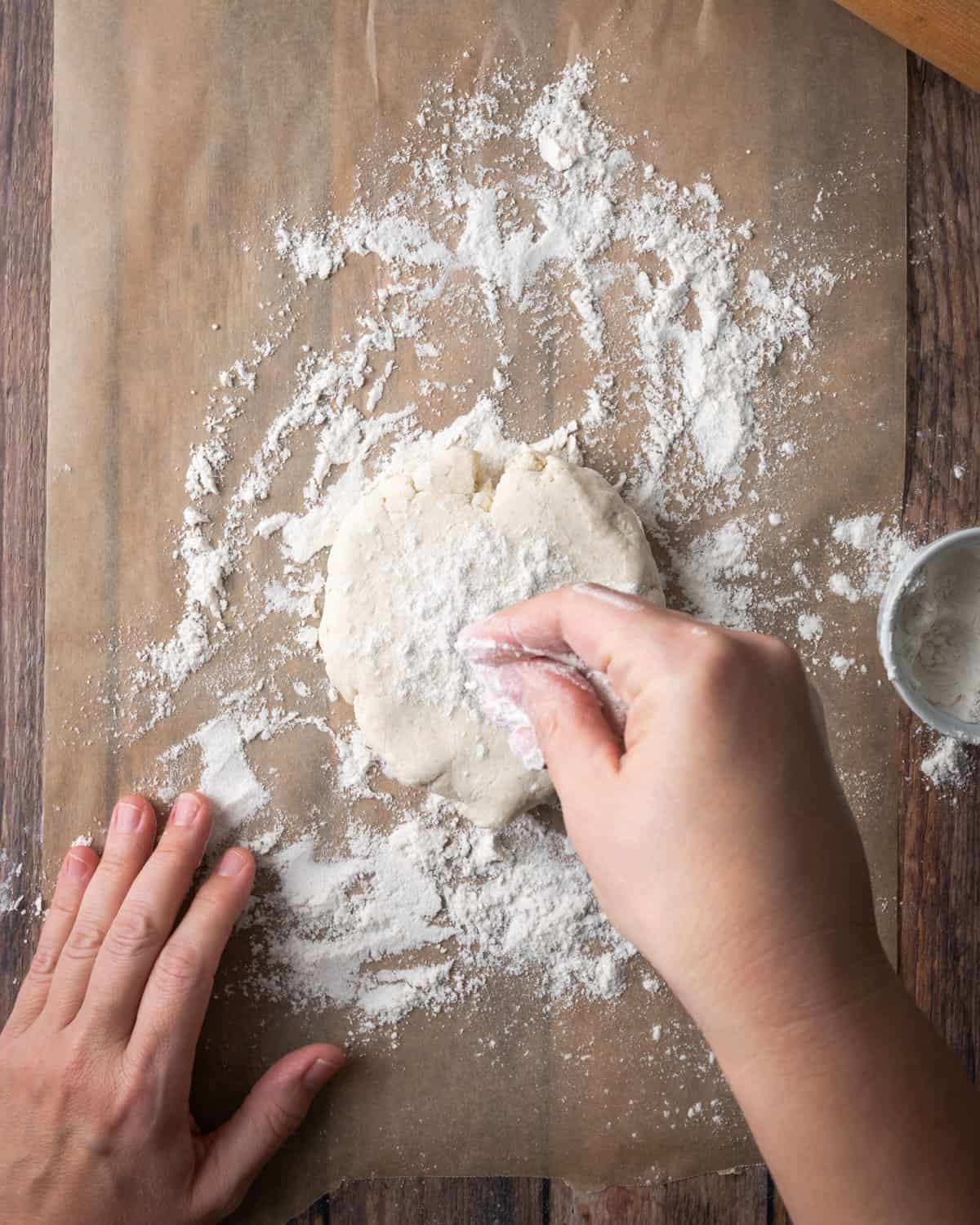
STEP 1: Place a sheet of parchment paper on your counter and sprinkle with about 1 tablespoon of gluten free flour. Place the dough on top of the flour.
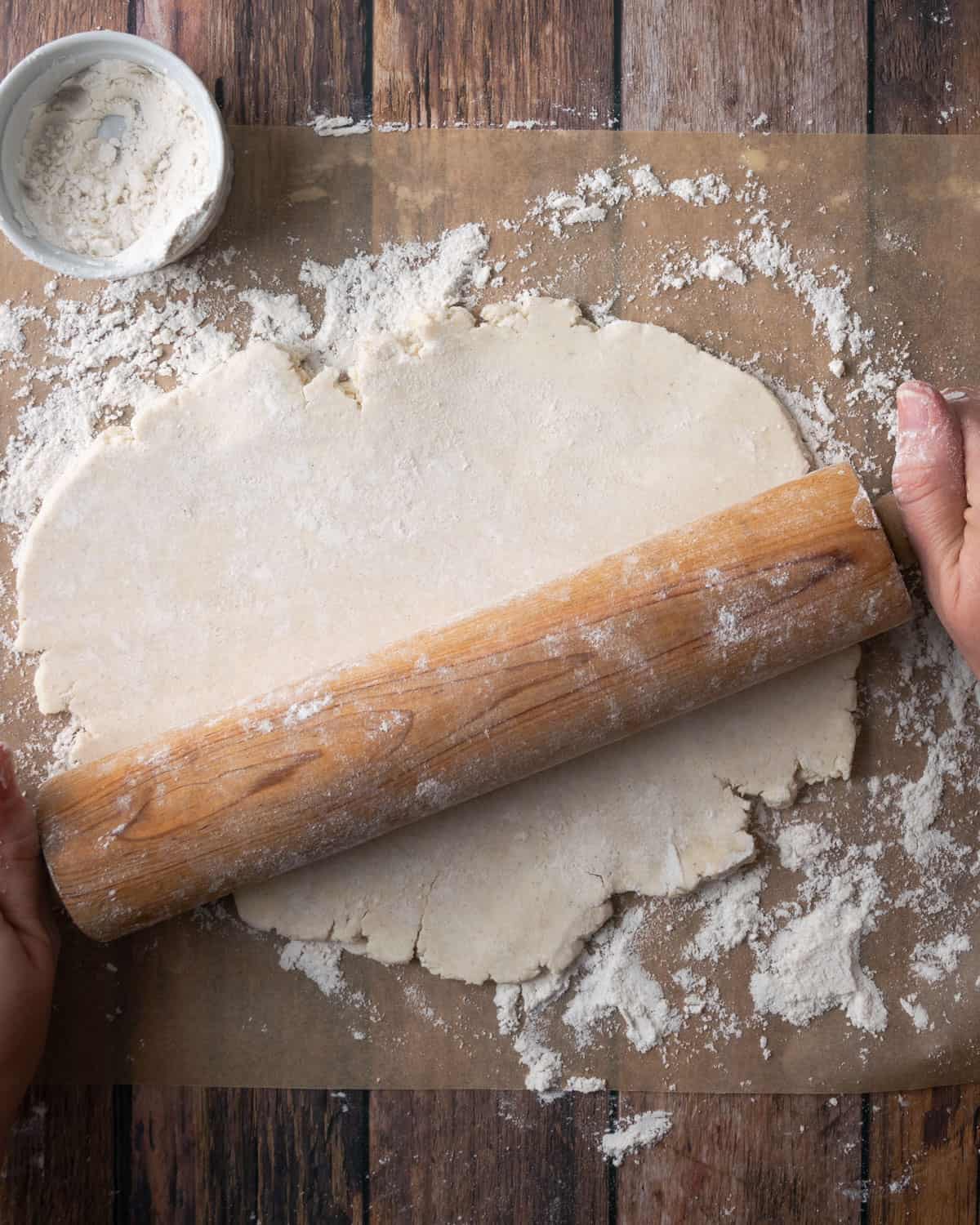
STEP 2: Sprinkle another tablespoon of flour on top of the pie dough and the rolling pin and roll directly on the dough.
Whichever method you choose, once your dough is rolled into a sheet. Place it on a baking sheet and refrigerate for another hour.
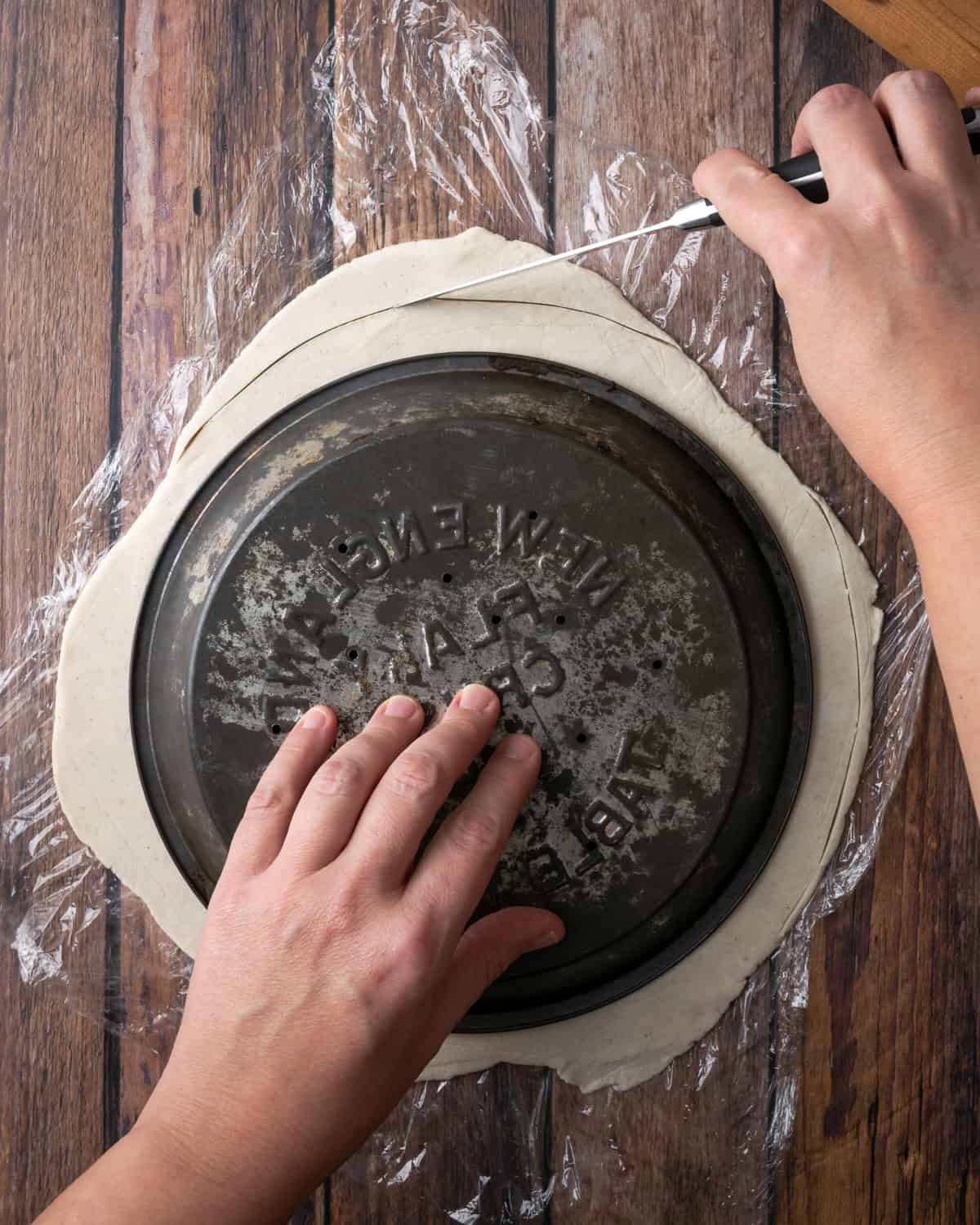
STEP 3: Remove the chilled dough sheet from the refrigerator. Flip the pan over and use it as a guide to trim the edges of the dough leaving a ½" overhang.
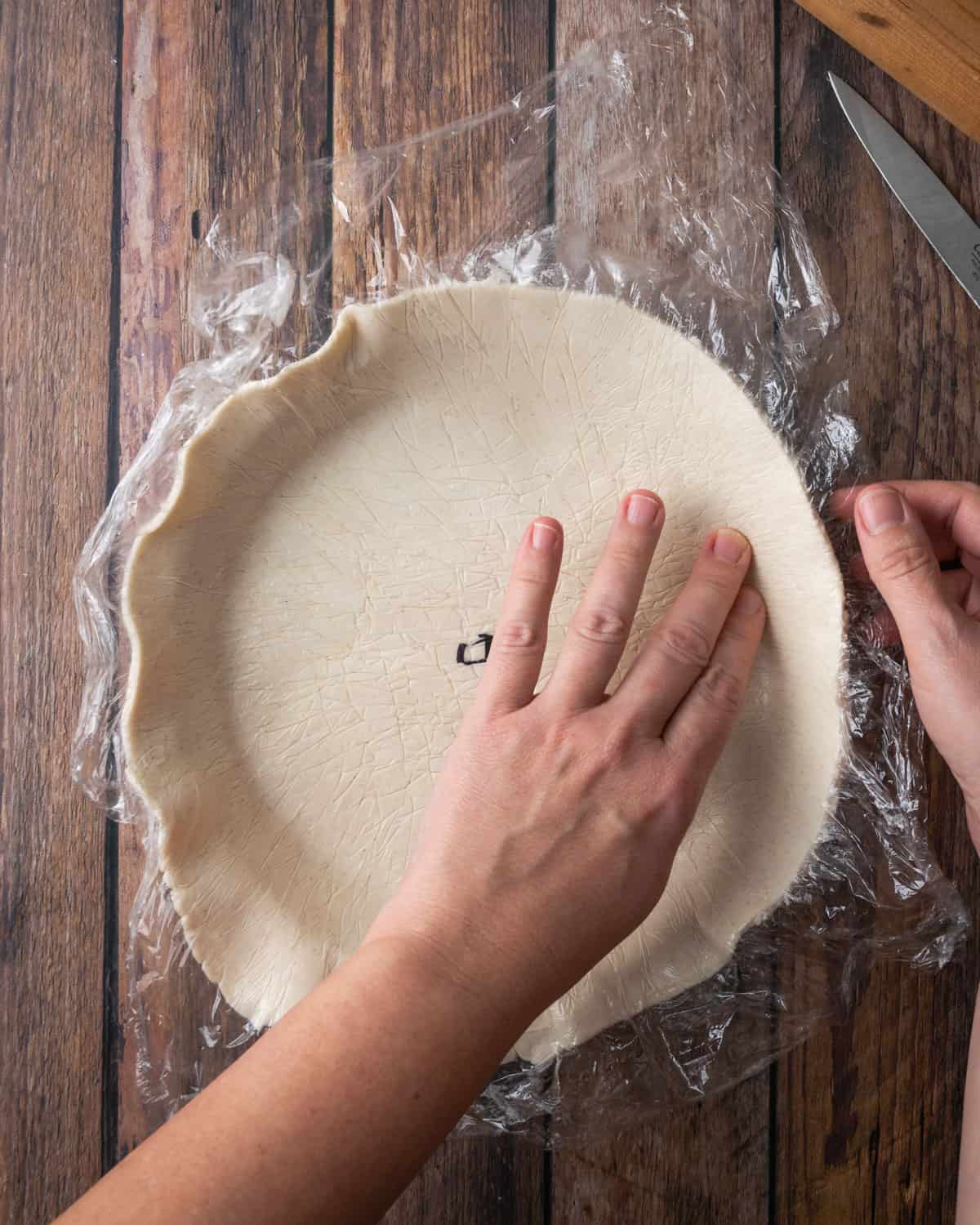
STEP 4: Flip the dough and pan over. Gently work the dough into the shape of the pan, taking care not to press it in because it will stick.
Place pie shell in the freezer while you make your favorite filling. If it will be frozen for more than 30 minutes, make sure to cover it well with plastic wrap to prevent drying out.

Baking Tip
Patch any holes in your crust with the trimmed pieces of dough. Pie filling can leak through holes in the crust and make the pie stick to the pan.
How to Make Extra Flaky Gluten-Free Pie Crust
There are a few things that contribute to the flaky texture of pie crust.
- Keep your butter extra cold - When the dough starts to set as the butter melts in the oven, little pockets of steam form which make the flaky airy texture in pie crust. If your butter is too warm when it enters the oven, it will melt out before the crust sets leaving a greasy pool and a crunchier, more cracker like crust.
- Size of the butter pieces in the dough - Many recipes call for pea sized butter, which is ideal for lattice work and designs, but for flakiness you want large pieces of butter.
- Create layers in your crust - You will need to use the flour dusted method described above to do this. Once you roll your dough into a large sheet, carefully fold the dough in half right to left. Then fold it in half again top to bottom. Then re-roll out the dough to the size of your pie pan. You’ve now added several extra layers into your flaky pie crust.
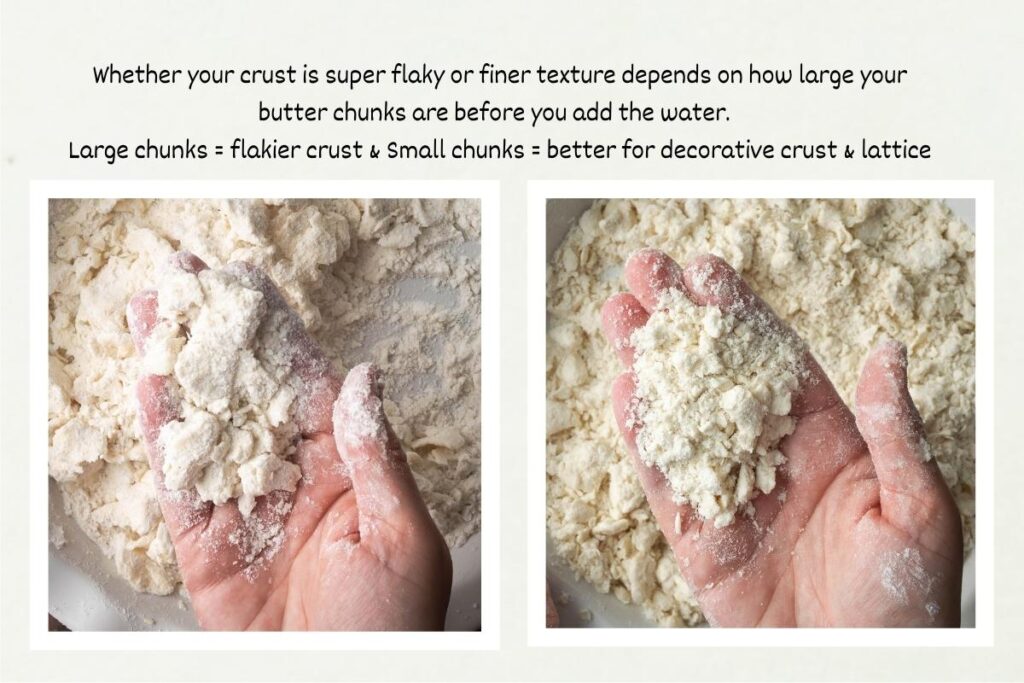
How to make a lattice pie crust
Once you've mastered making pie dough, making designs with your pie crust is a fun way to dress up your pie.
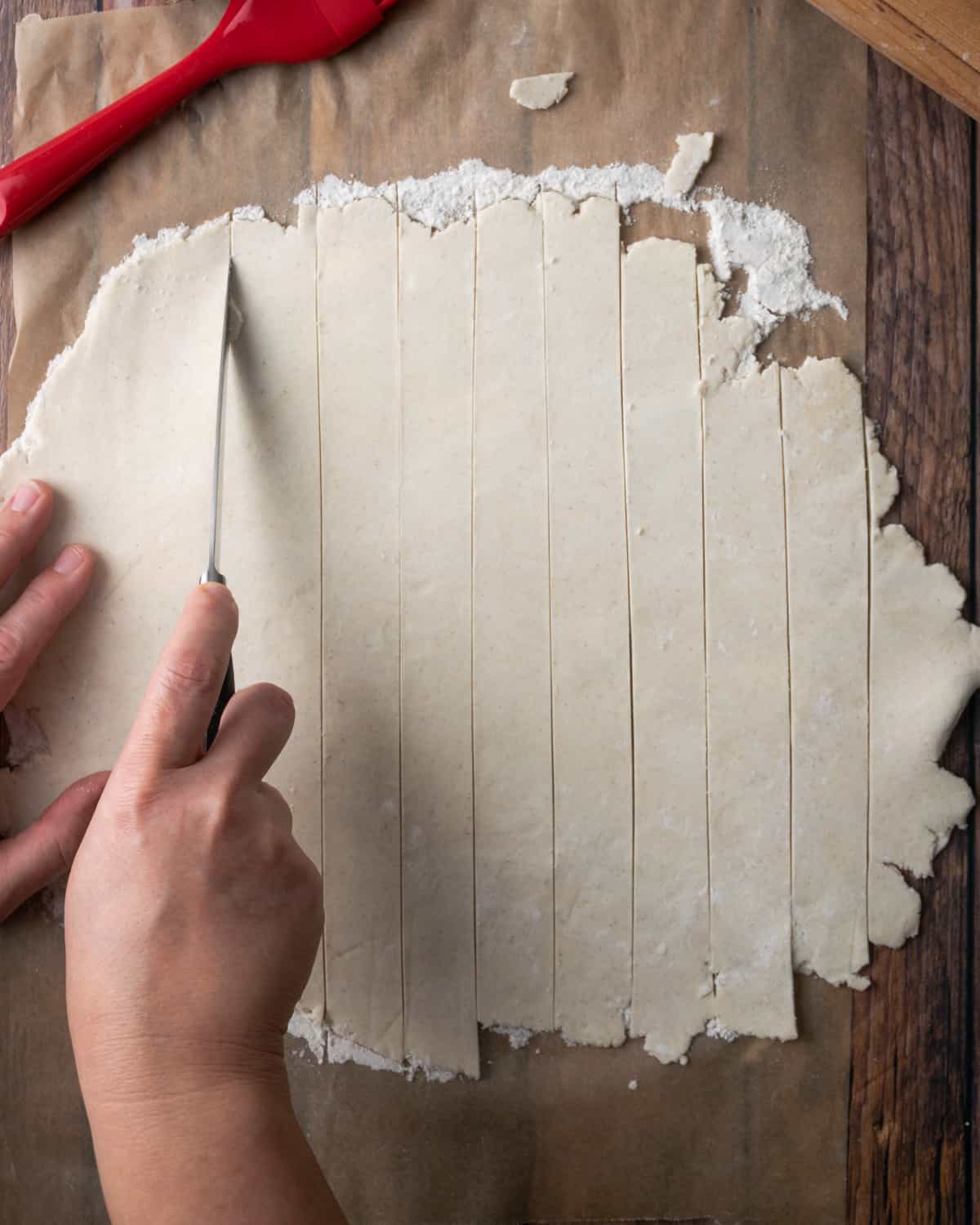
STEP 1: Roll out a sheet of gluten free pie dough. Cut it into strips.
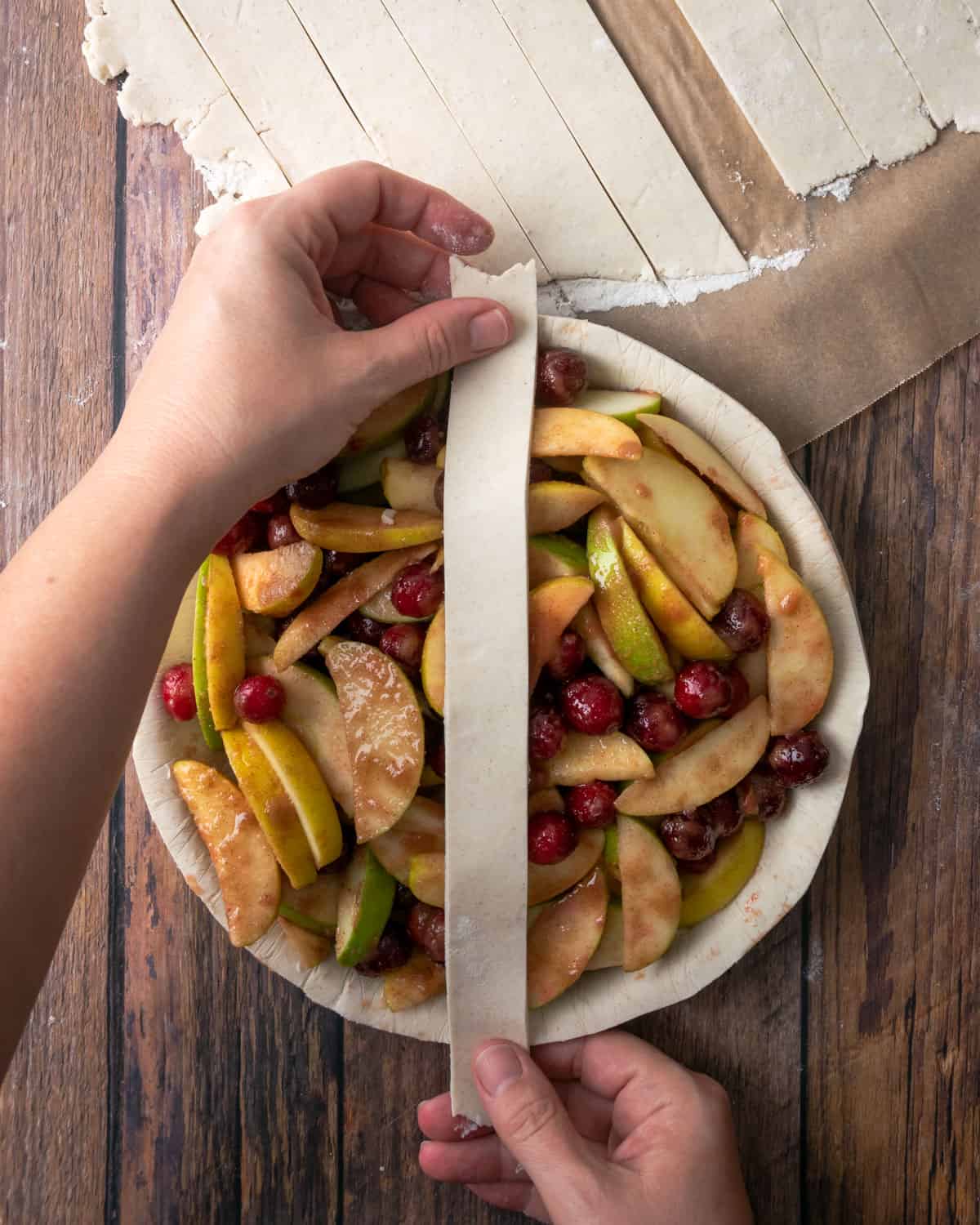
STEP 2: Using every other strip from the sheet of dough, place all of the lines going one direction.
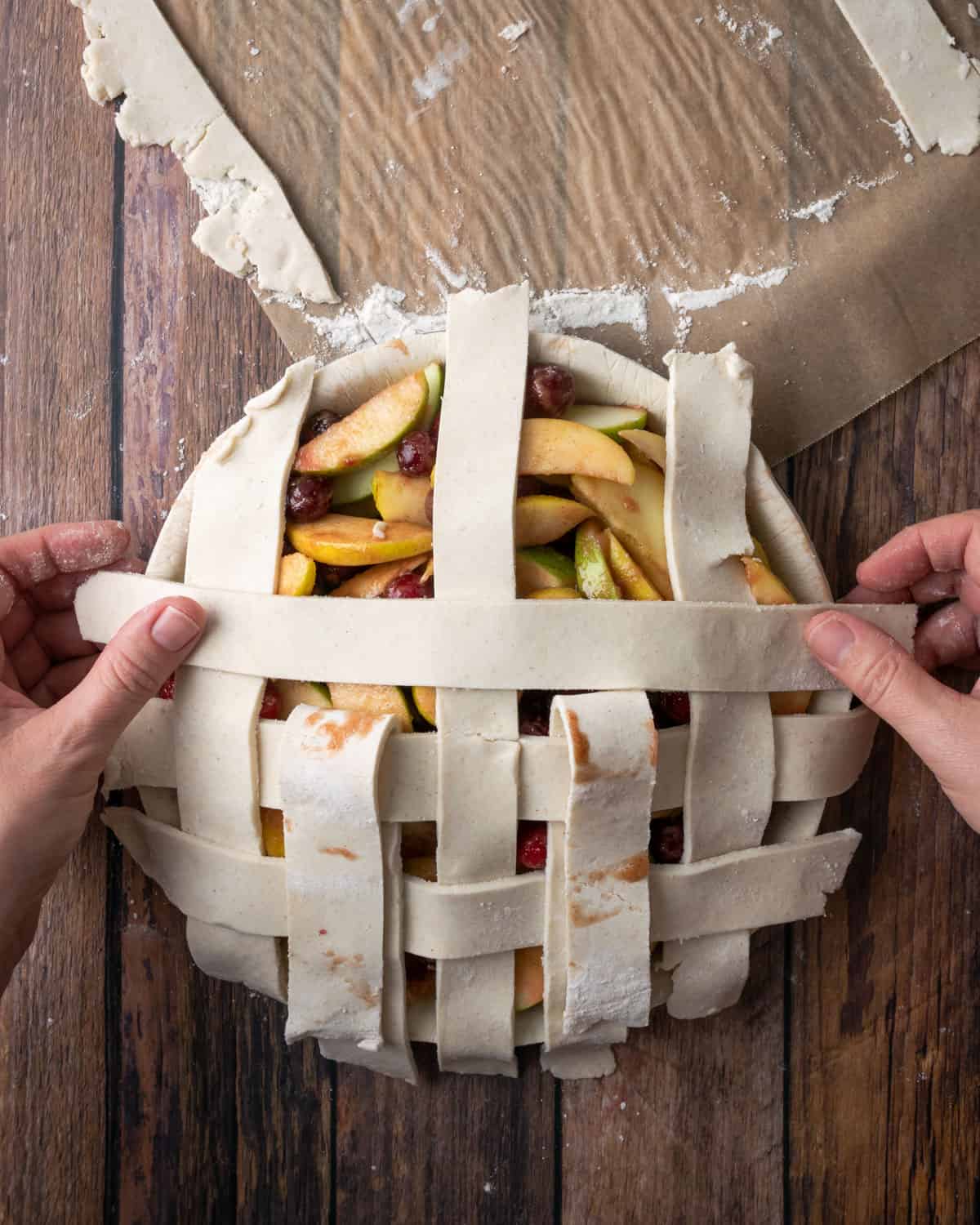
STEP 3: Fold back every other strip of dough and place the perpendicular piece of dough across. Then fold the pieces up and repeat with the alternating strips.
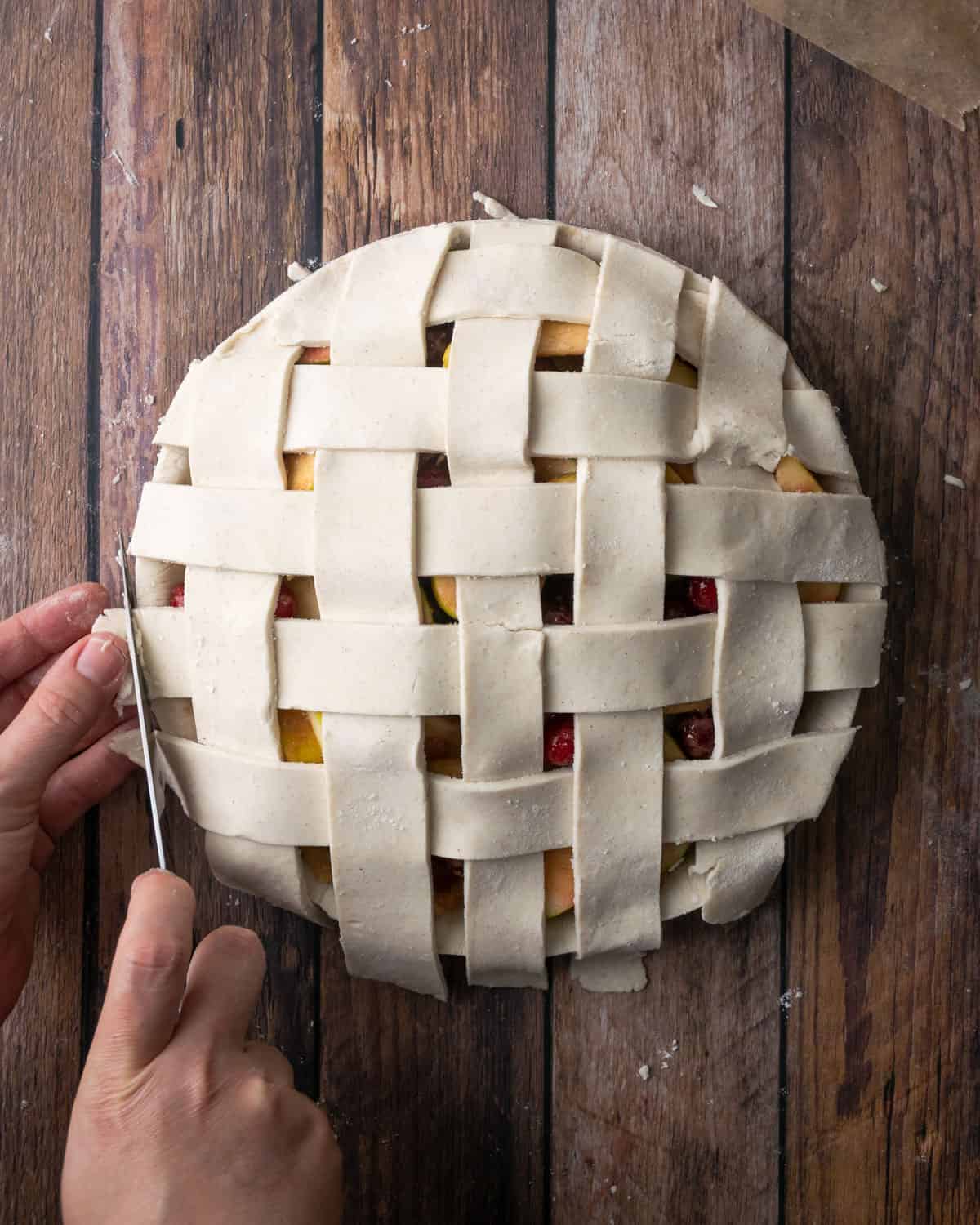
STEP 4: Once the lattice is complete, trim the edges off and crimp with your favorite design.
Recipe FAQs
At the patty stage, where your dough is wrapped in plastic wrap, you can store in the refrigerator up to 5 days before rolling out.
You can also transfer the wrapped dough to a freezer bag or airtight container and freeze for up to 3 months. To use frozen dough, just thaw overnight in the refrigerator and roll out as directed above.
Yes. Once you've wrapped your discs of pie dough, transfer the wrapped dough to a freezer bag or airtight container and freeze for up to 3 months. To use frozen dough, just thaw overnight in the refrigerator and roll out as directed above.
You can also freeze your completed pie shells. I usually make a few at a time so I don't have to go through all the steps every time we want a pie. Prepare your dough, roll it out and line your pan. Disposable pie plates work great for this. Once it's done, place your pie shell in the freezer for about 30 minutes until it's frozen solid. Then remove it and wrap it in at least 3 layers of plastic wrap, making sure there are no openings. Store in a freezer bag or airtight container in the freezer up to 3 months. No need to thaw before using.
Wrap the dough tightly with plastic wrap and place the wrapped pieces inside of a freezer bag.
Pie dough can be frozen for up to 3 months before using. If you've frozen it in disc form, thaw overnight in the refrigerator before rolling out. If you've frozen pie shells, you can use them directly from the freezer - no need to thaw.
No, you should only thaw frozen dough in the refrigerator. At room temperature the fat will be too warm and the dough will become difficult to use.
I don't recommend it. Microwave defrosting will heat the dough unevenly and cause some parts to become too soft to handle.
Pie recipes to consider:
If you try this recipe, please leave a 🌟🌟🌟🌟🌟 star rating and let me know how you liked it in the comments below.
Recipe
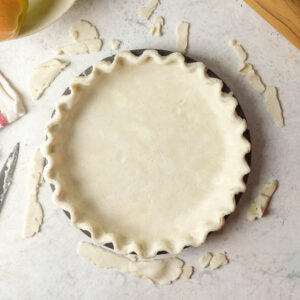
Best Gluten Free Vegan Pie Crust
Ingredients
- 2 ¼ Cup Gluten Free 1-to-1 Flour Blend I use Bob's Red Mill, see notes
- 2 Tablespoon Cornstarch
- ½ teaspoon Salt
- 1 Tablespoon Sugar
- ½ Cup Vegan Butter Vegan or Regular
- ½ Cup Shortening
- ½ Cup Cold Water
Instructions
- Cut the butter and shortening into cubes about ½" in size. Place into the freezer for at least 15 minutes prior to mixing.
- Measure the water and place into the freezer while you mix the remaining ingredients.
- In a large bowl, combine the flour, cornstarch, salt and sugar. Stir well to ensure it's evenly mixed.2 ¼ Cup Gluten Free 1-to-1 Flour Blend, 2 Tablespoon Cornstarch, ½ teaspoon Salt, 1 Tablespoon Sugar
- Add the frozen butter and shortening cubes to the flour mixture. Toss the butter around to make sure it is completely coated with flour. Working as quickly as possible, use your thumb and first two fingers to squish the butter cubes into discs about the size of a quarter.½ Cup Vegan Butter, ½ Cup Shortening
- Once all the butter has been worked into the flour, add half of the cold water. Toss the ingredients together to hydrate the flour. If any large clumps forms, break them apart. Continue to add the water a little at a time and toss it together until the dough forms into a rough ball. You may not need all of the water, but you should need most of it.½ Cup Cold Water
- Form your dough ball into a circular patty about 1 inch thick and wrap in plastic wrap. Place in the refrigerator for 2 hours or up to 5 days.
- Place a large piece of parchment paper on your counter and dust with 1 tablespoon of gluten free flour. Place your dough patty on the floured surface. Dust the top of the dough and your rolling pin with another bit of flour. You don't want a lot of flour, just enough to keep the rolling pin from sticking to the dough.
- Roll out your dough working from the middle and rotating the dough as you go to make sure you're working evenly. Roll until the dough measures 1 inch larger in diameter than the pie pan.
- Place the dough sheet onto a baking sheet and put into the refrigerator for 1 hour.
- Once the dough sheet has chilled, remove it from the refrigerator and flip it over into the pie pan. Work the dough gently into the pan, taking care not to press the dough in as it will stick. If you make any holes in the dough, patch them with leftover dough.
- Trim the dough about ½" outside of the edge of the pie pan. Fold the edge under and crimp however you'd like. Place finished pie shell in the freezer until ready to use. If you will freeze more than 30 minutes, make sure to cover with plastic wrap.
Video
Notes

Tiffany is the recipe developer, stylist and food photographer behind Well Fed Baker. As a lifelong baker who had to go gluten free and dairy free in 2016, Tiffany strives to share allergen friendly recipes that never feel like they are free from anything.

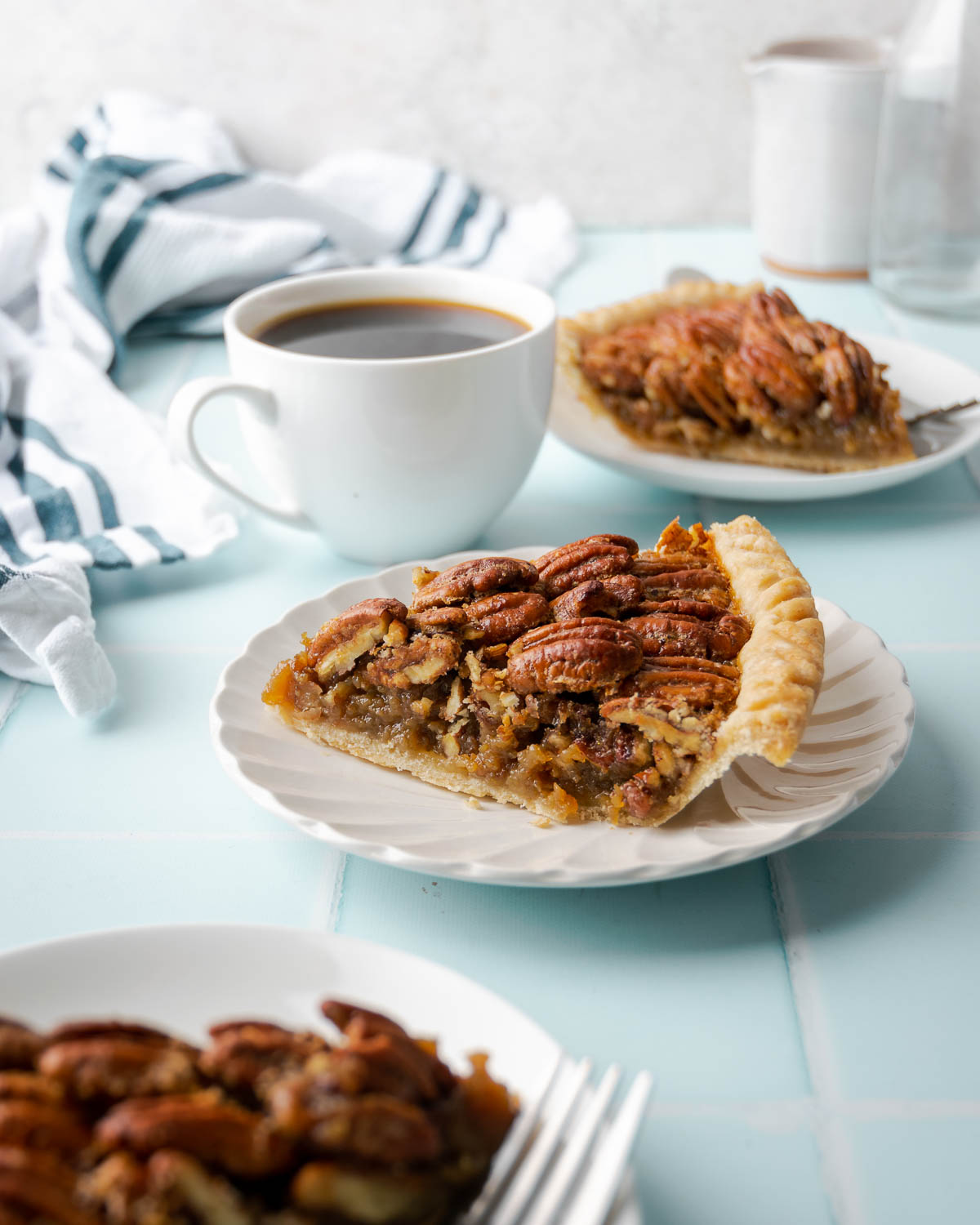


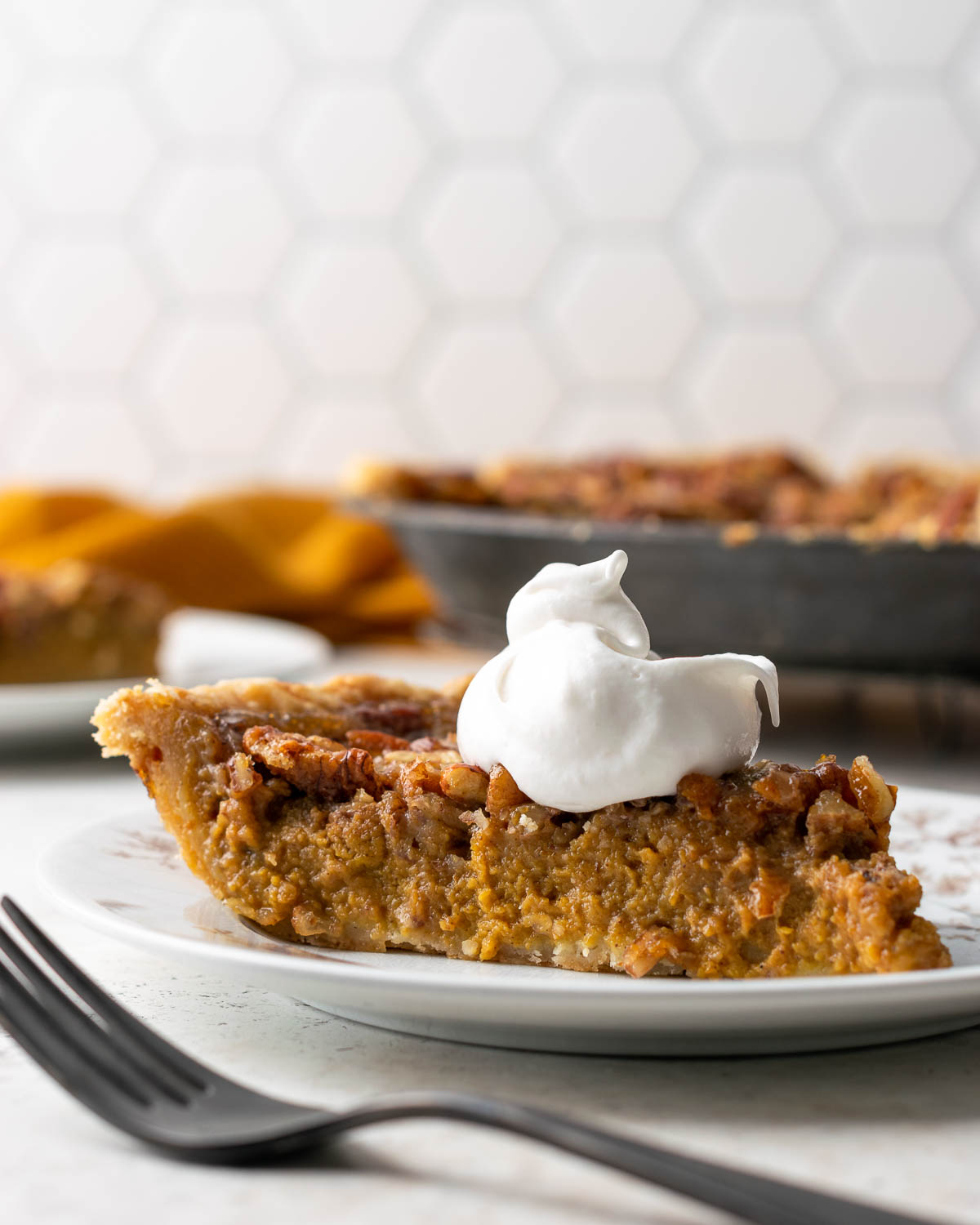

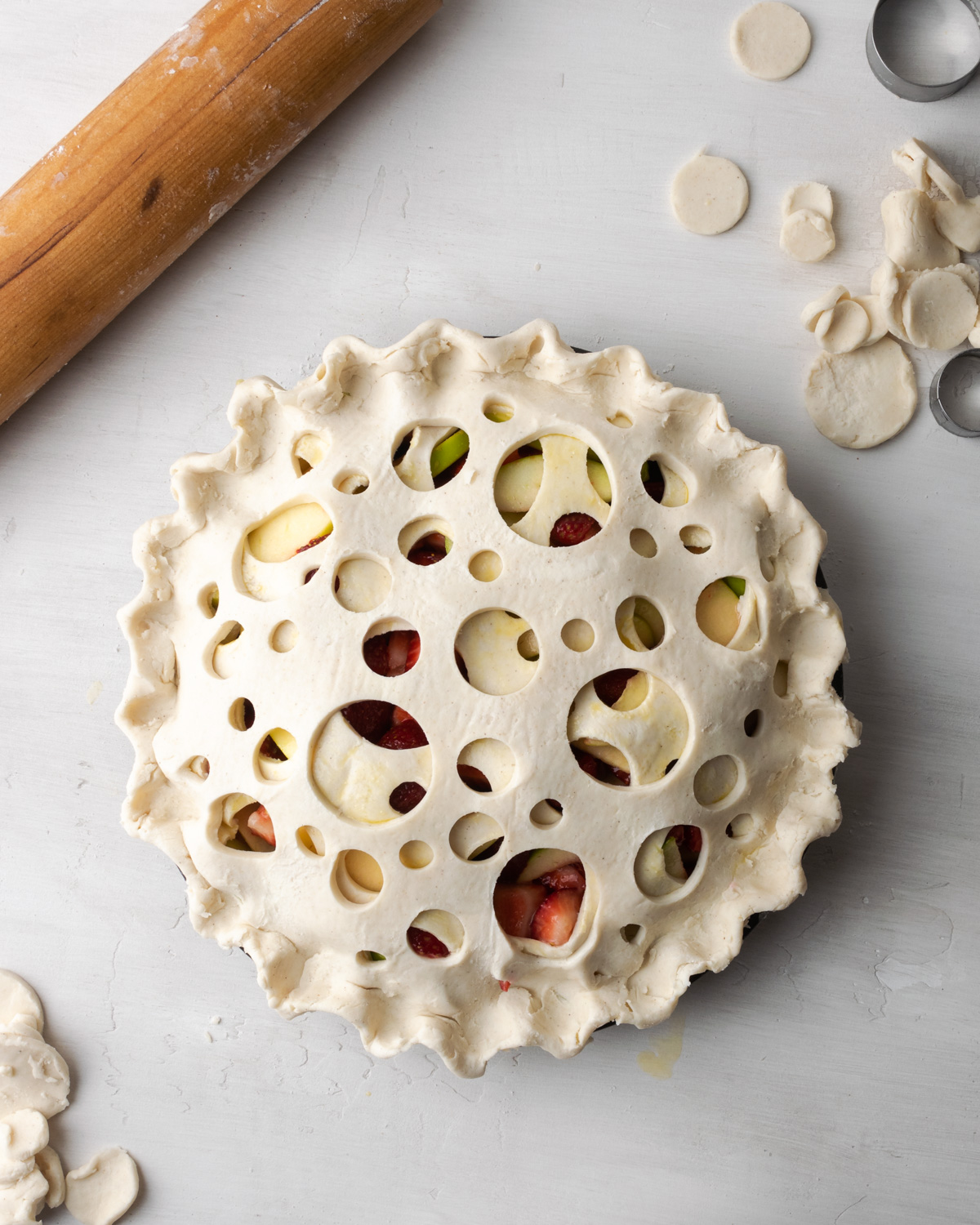
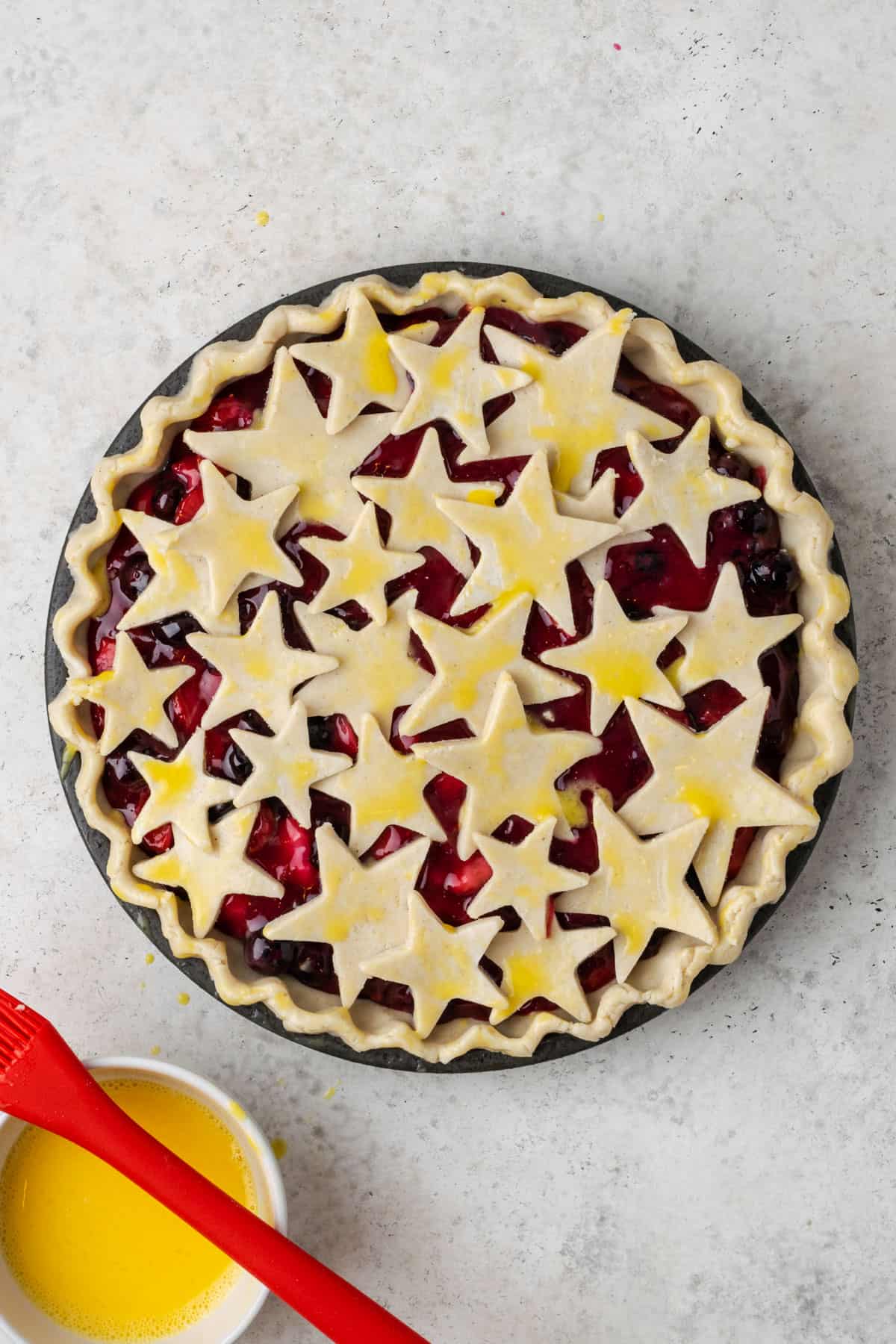

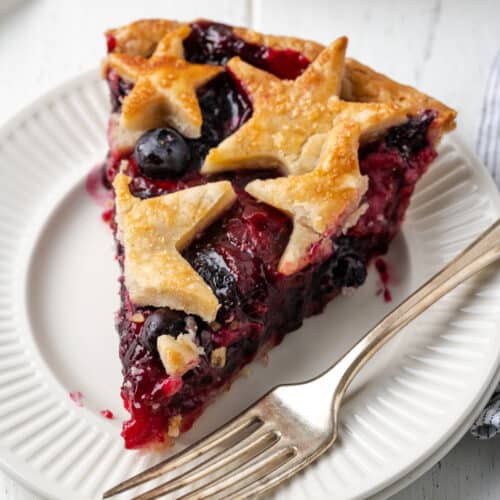
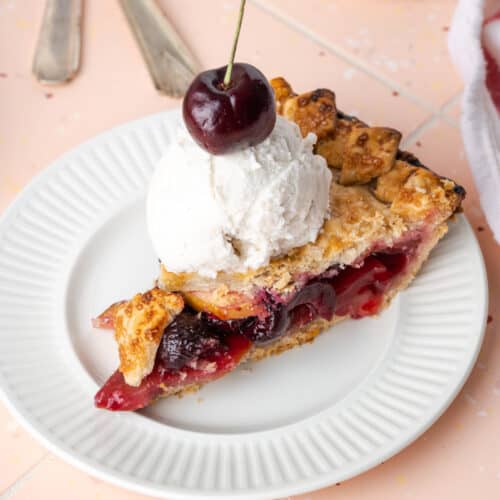
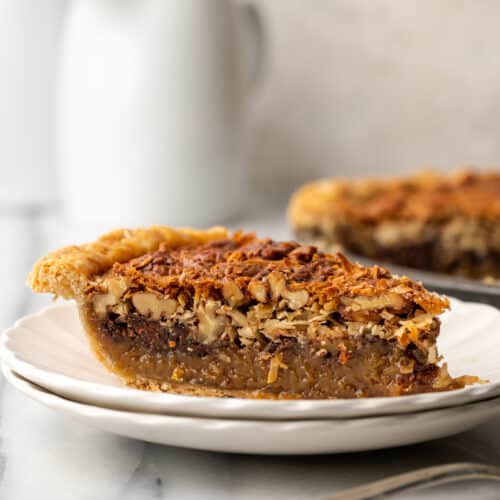
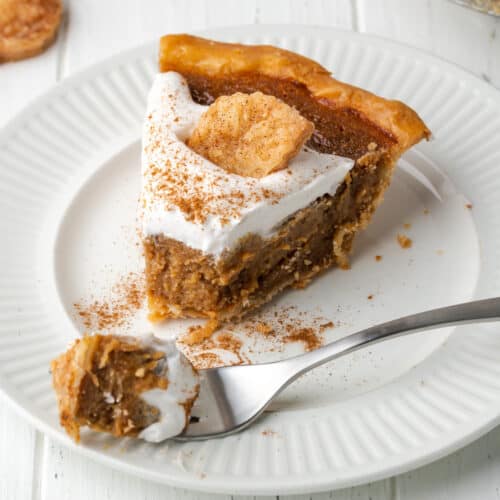
Donna says
Tiffany c an I sub gf all purpose flour for 1:1 Bobs red mill? Whenever I've made gf pie crust I follow to the recipe to the T but it's too small. I do have only deep dish pie plates which are 9 and one half inch. Would buying a standard size one help or tin.?Mine are pyrex Also can I sub all butter in place of shortening?
Hi Donna, If you're using one like Pillsbury GF all purpose or Great Value All Purpose those will work fine. Bob's Red Mill All Purpose is made from beans and has a strong savory flavor, which might not be very delicious in pie crust. Whichever you choose, make sure it has xanthan gum or you'll need to add that. Without it the pie dough will crumble apart. I usually use deep dish pie plates and this recipe will definitely make enough dough for one deep dish pie with a top. If you try to make it into two deep dish pies, there isn't quite enough dough to make a nice edge on both bottom crusts. A standard size pan will definitely give you enough for two bottoms and maybe a little piece of dough leftover. And yes, you can use all butter in place of shortening. You will need just a little less water (like maybe 1 tablespoon less). Good luck!